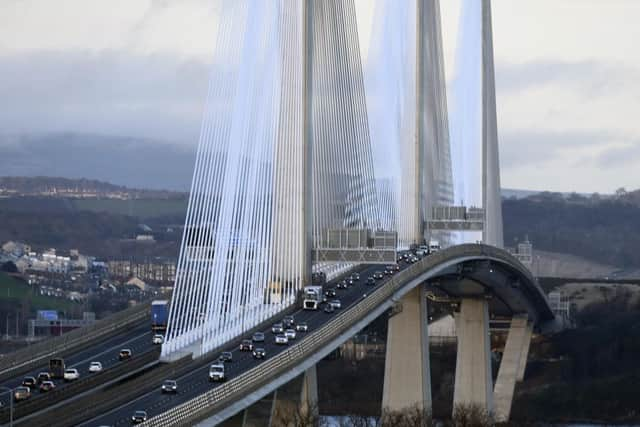Data sparks alert on investment in green projects


Experts recommend 72 per cent of public spending on infrastructure should be allocated to low-carbon schemes such as electrification of public transport and renewable power to meet climate change targets and safeguard society.
But the latest figures suggest only 32 per cent of government-led investment in the next 12 months will go to schemes considered the least harmful to the planet.
Advertisement
Hide AdAdvertisement
Hide AdMeanwhile, 10 per cent will be paid to high-carbon projects such as oil and gas works and road-building and 58 per cent to neutral developments such as schools, hospitals and prisons.


This represents a small rise in low-carbon investment and slight fall in high-carbon compared with the previous year. However, a new report from the Scottish Parliament Information Centre (SPICe) predicts that future investment is likely to increase for carbon-heavy developments and decrease for low-carbon projects.
Patrick Harvie, joint leader of the Scottish Greens, insists ministers must “pick up the pace” of transition to a greener society to stave off environmental calamity and protect communities.
“The latest climate science tells us we only have 12 years to avoid catastrophe,” he said.
“Projects such as electrification of rail services and retrofitting housing to prevent heat being lost must become a higher priority than the outdated choices of successive governments, such as expanding the motorways and subsidising oil and gas exploration.” He added that the Government should favour investment in public transport, and cycling and walking networks.
“Low-carbon spending has lasting benefits to employment, public health and the environment. It’s an agenda that the private sector, public bodies and charities are all signed up to but we need the government to take the lead.”
The Scottish Liberal Democrats have backed the call. The party’s energy spokesman Liam McArthur said: “The Government must put its weight behind low-carbon infrastructure in every corner of the country.”
Government-led infrastructure projects worth a total of £11.1 billion – mostly in transport, health and education – have been completed since 2007. These include the new Queensferry Crossing over the Forth and Glasgow’s Queen Elizabeth University Hospital. A further £3.7bn of capital projects are under construction, including the dualling of the A9 and the Glasgow-to-Edinburgh rail upgrade.
Advertisement
Hide AdAdvertisement
Hide AdThe SPICe report points out the importance of infrastructure in tackling climate change because “the types of transport, housing and energy invested in today will last for many years and lock in a pattern of future greenhouse gas emissions”.
A Scottish Government spokesperson said: “Investment in infrastructure is vital to meeting our low carbon ambitions. The SPICe analysis only covers major projects over £20m. Taking our entire capital budget into account shows we have increased our spend on low carbon projects from 21 per cent in 2017-18 to 32 per cent in the 2019-20 draft budget. We have also committed to year-on-year increased low carbon infrastructure investment until the end of this parliament.”